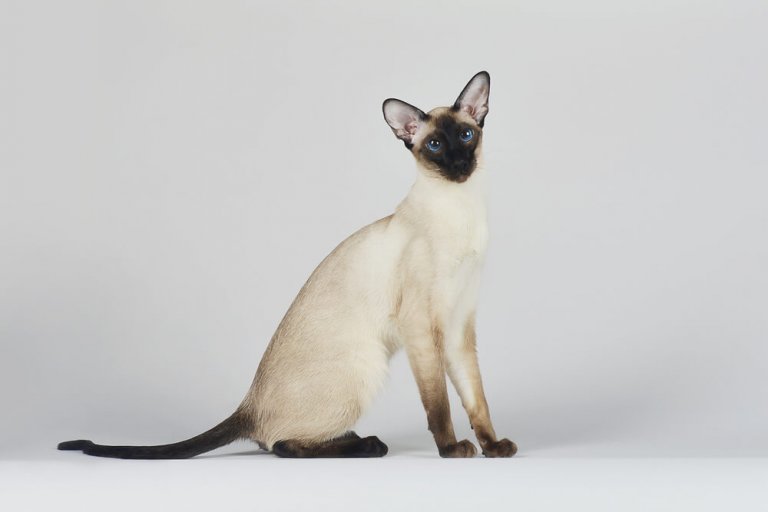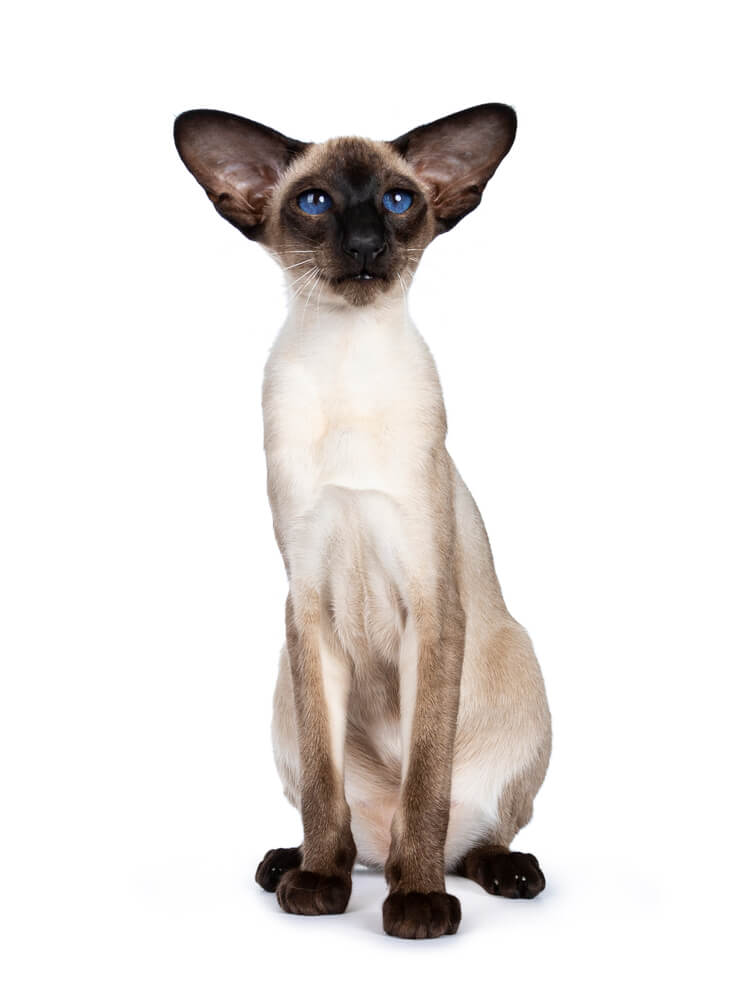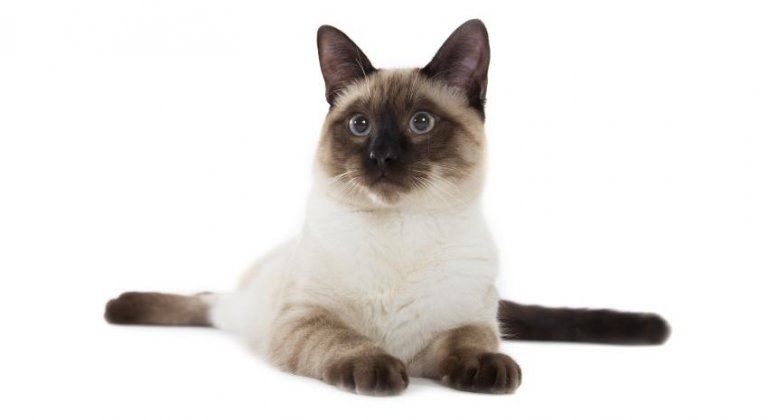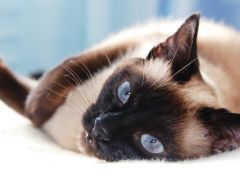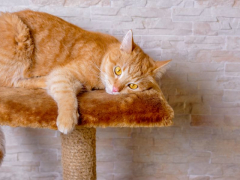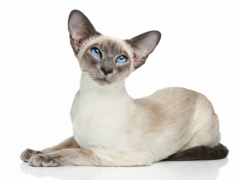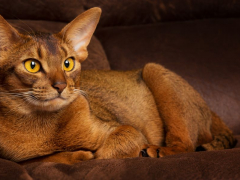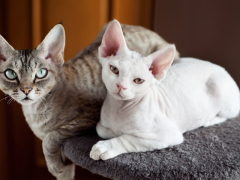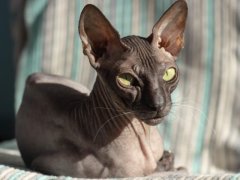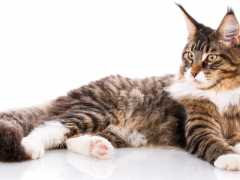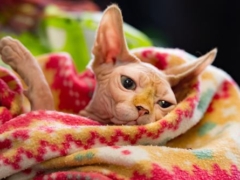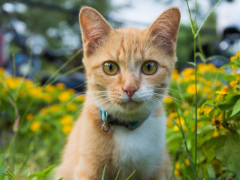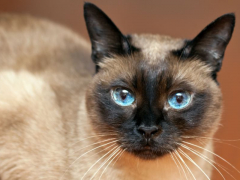Personality and Temperament
If you've been looking for a cat that likes to talk back to you, consider the Siamese. Among the most vocal of all breeds, these chatty cats love nothing more than to spend time alongside their favorite people, eagerly offering advice and opinions about everything that happens throughout the day.
Talkative tendencies are just the beginning. Siamese cats are friendly and playful, with the ability to get along well with just about everyone as long as they are properly socialized as kittens.
The Siamese cat's beautiful blue eyes contribute to the breed's stunning appearance. Since looks aren't everything, it's important to note that the Siamese cat is highly intelligent and more than a little curious. These cats keep their families amused with their antics and they are usually more than happy to learn simple tricks. Playing fetch is a favorite pastime, and outdoor walks on leashes are often enjoyed, as well.
Very busy families might do better with a cat that requires less attention, as the Siamese can quickly develop unwanted behaviors if left alone for too long. The good news is that if you have always wanted a Siamese kitten, having a second cat or a friendly dog that's willing to stand in as a playmate can be a remedy for the kind of boredom that can lead to destructive tendencies. This doesn't mean that you'll be able to leave your cat to its own devices, but it helps to have another animal to provide companionship when you cannot be at your cat's beck and call.
Overall, Siamese cats are marvelous companions and fantastic snugglers. No wonder the Siamese is one of the world's most popular cat breeds!
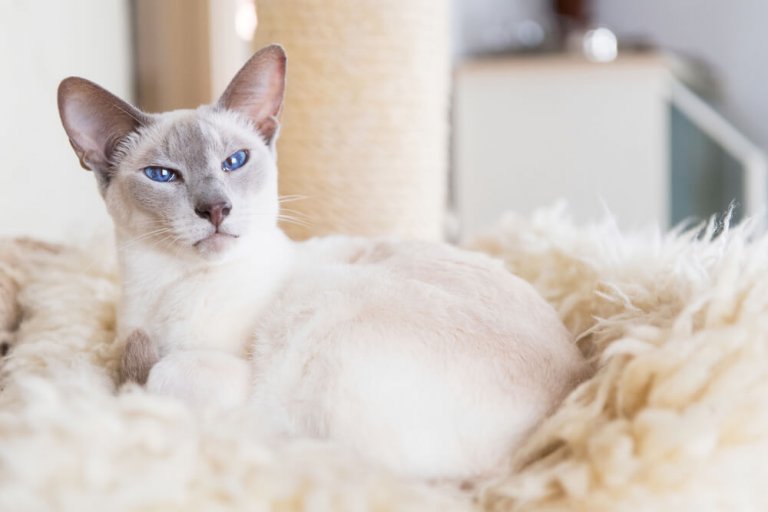
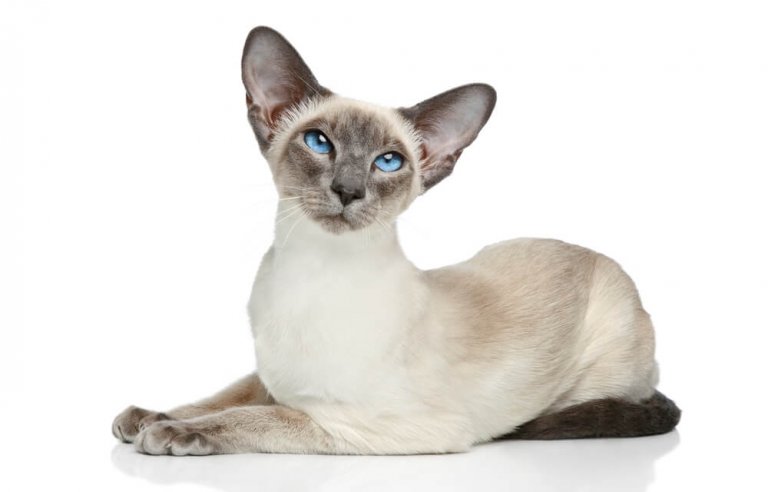
Care
Nutrition
Grooming
Exercise
Health
The Siamese cat has no special nutritional needs, however it is vital to offer a high-quality diet that is appropriate for your cat's life stage. A diet that is high in protein and low in carbohydrates can help prevent obesity, particularly later in life.
Thanks to their short, single layer coats, Siamese cats are very easy to care for. Simply give your cat a good rubdown with your fingers once or twice per week to remove any loose hair and cut back on shedding. In addition, you might want to use a chamois cloth or a silk scarf to polish your cat's coat to a gleaming shine.
Siamese cats are prone to periodontal disease, so make dental health a priority. You might be able to cut back on expensive dental cleanings by brushing your cat's teeth at home every day.
Last but not least, consider clipping your cat's claws. Siamese cats have a tendency to use their front paws like hands, getting into drawers and cupboards. Keeping their toenails clipped can help prevent damage to your furniture.
The Siamese is a naturally playful, active cat with a tendency to seek high places. Provide a tall cat tree to satisfy the natural urge to jump and climb, and take time out to offer interactive play sessions. Siamese cats enjoy all kinds of toys, particularly those that stimulate the mind. For example, a puzzle toy that dispenses treats is likely to be a favorite with any Siamese.
Siamese tend to be very healthy cats and many enjoy exceptionally long lives, often surviving into their 20s. Even so, there are several potential health concerns to be aware of including respiratory infections and a type of heart disease called hypertrophic cardiomyopathy.
Siamese are prone to central nervous system diseases, including psychogenic alopecia, a condition that leads to excessive grooming that causes hair loss. Some also suffer from feline hyperesthesia syndrome, which causes oversensitive skin.
Siamese cats are also more sensitive to anesthesia than other cats, meaning that surgical procedures can pose a higher risk.
Crossed eyes and kinked tails are two common issues for Siamese cats. Neither is serious, although crossed eyes can prevent the affected cat from enjoying good peripheral vision.
History
The Siamese cat is a natural aristocrat, originally bred in the kingdom of Siam, which we know as Thailand today. Because these cats were considered sacred in ancient Siam, only members of royalty and Buddhist monks were allowed to keep them.
The breed was first described in the ancient Tamra Maew manuscripts also known as The Cat-Book Poems, which was curated during the Ayutthaya Kingdom between 1351 and 1767.
When European dignitaries began visiting Siam in the 1800s, they were often impressed with the cats and as a gesture of goodwill, members of the Siamese royal family began offering Siamese cats as gifts. These cats made their way to Europe with their new families, quickly gaining popularity for their exquisite appearance and unique personalities.
In 1878, Bangkok’s American consul gave a Siamese cat named “Siam” to U.S. President Rutherford B. Hayes and First Lady Lucy Hayes. Siam was the first Siamese to reach America.
In 1884, British Consulate General Edward Blencowe Gould brought a breeding pair of Siamese cats to his sister, Lilian Jane Gould, who co-founded Britain’s Siamese Cat Club in 1901. Most British Siamese cats can be traced back to just 11 original imports.
The Cat Fanciers' Association (CFA) granted official recognition in 1906, making the Siamese one of the oldest pedigreed cat breeds in existence.
By the 1950s and 1960s, the Siamese had gained popularity worldwide. Today, the breed is accepted by all cat registries. Long-haired Siamese cats are typically registered as Balinese.
